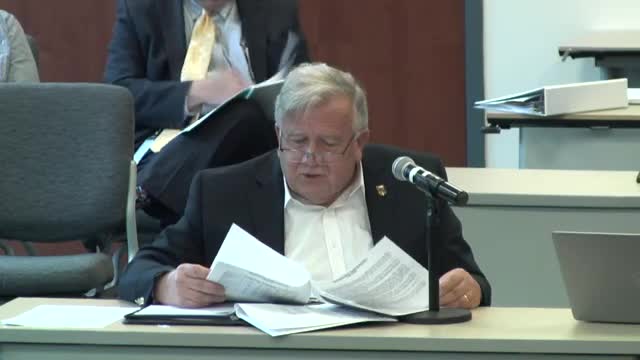Budget Crisis Looms as School Funding Fails to Keep Up
October 01, 2024 | Washington County Public Schools, School Boards, Maryland
This article was created by AI summarizing key points discussed. AI makes mistakes, so for full details and context, please refer to the video of the full meeting. Please report any errors so we can fix them. Report an error »

During a recent government meeting, officials discussed critical issues surrounding school construction and maintenance funding, emphasizing the impact of Maryland's Blueprint for the Future on the budget. The meeting highlighted significant enrollment trends and their implications for future financial planning.
A key point raised was the increase in capital assets, which rose from approximately $449.4 million to $453.4 million. However, this growth was overshadowed by a depreciation increase of about $12.5 million, leading to a net decrease in fixed assets from $246.5 million to $241.5 million. Officials noted that while new investments in facilities are being made, they are not sufficient to offset the wear and tear on existing structures.
The discussion also touched on the funding model for school construction, which is predominantly state-funded at 70%, with a local match of 30%. This reliance on state funding presents challenges for the school system as it navigates the financial landscape shaped by the Blueprint for Maryland's Future.
Another significant topic was the management of Other Post-Employment Benefits (OPEB). Concerns were raised about the current funding strategy, which has shifted towards a \"pay-as-you-go\" model, potentially jeopardizing future financial stability. The meeting revealed that the unrestricted fund balance is alarmingly low, equating to just one week's worth of spending. This situation raises concerns about the ability to respond to emergencies without adequate reserves.
The OPEB funding status was also discussed, with the school system reportedly being 40% funded, a figure that stands out positively compared to peers in the state, many of which are significantly underfunded. This funding level is crucial as it directly affects the long-term financial health of the school system, especially in light of potential increases in liabilities due to inflation.
Overall, the meeting underscored the pressing need for strategic financial planning to address the challenges of maintaining and improving school facilities while ensuring the sustainability of employee benefits. The discussions reflect a broader trend in public sector financial management, where transparency and accountability in funding practices are increasingly critical.
A key point raised was the increase in capital assets, which rose from approximately $449.4 million to $453.4 million. However, this growth was overshadowed by a depreciation increase of about $12.5 million, leading to a net decrease in fixed assets from $246.5 million to $241.5 million. Officials noted that while new investments in facilities are being made, they are not sufficient to offset the wear and tear on existing structures.
The discussion also touched on the funding model for school construction, which is predominantly state-funded at 70%, with a local match of 30%. This reliance on state funding presents challenges for the school system as it navigates the financial landscape shaped by the Blueprint for Maryland's Future.
Another significant topic was the management of Other Post-Employment Benefits (OPEB). Concerns were raised about the current funding strategy, which has shifted towards a \"pay-as-you-go\" model, potentially jeopardizing future financial stability. The meeting revealed that the unrestricted fund balance is alarmingly low, equating to just one week's worth of spending. This situation raises concerns about the ability to respond to emergencies without adequate reserves.
The OPEB funding status was also discussed, with the school system reportedly being 40% funded, a figure that stands out positively compared to peers in the state, many of which are significantly underfunded. This funding level is crucial as it directly affects the long-term financial health of the school system, especially in light of potential increases in liabilities due to inflation.
Overall, the meeting underscored the pressing need for strategic financial planning to address the challenges of maintaining and improving school facilities while ensuring the sustainability of employee benefits. The discussions reflect a broader trend in public sector financial management, where transparency and accountability in funding practices are increasingly critical.
View full meeting
This article is based on a recent meeting—watch the full video and explore the complete transcript for deeper insights into the discussion.
View full meeting
